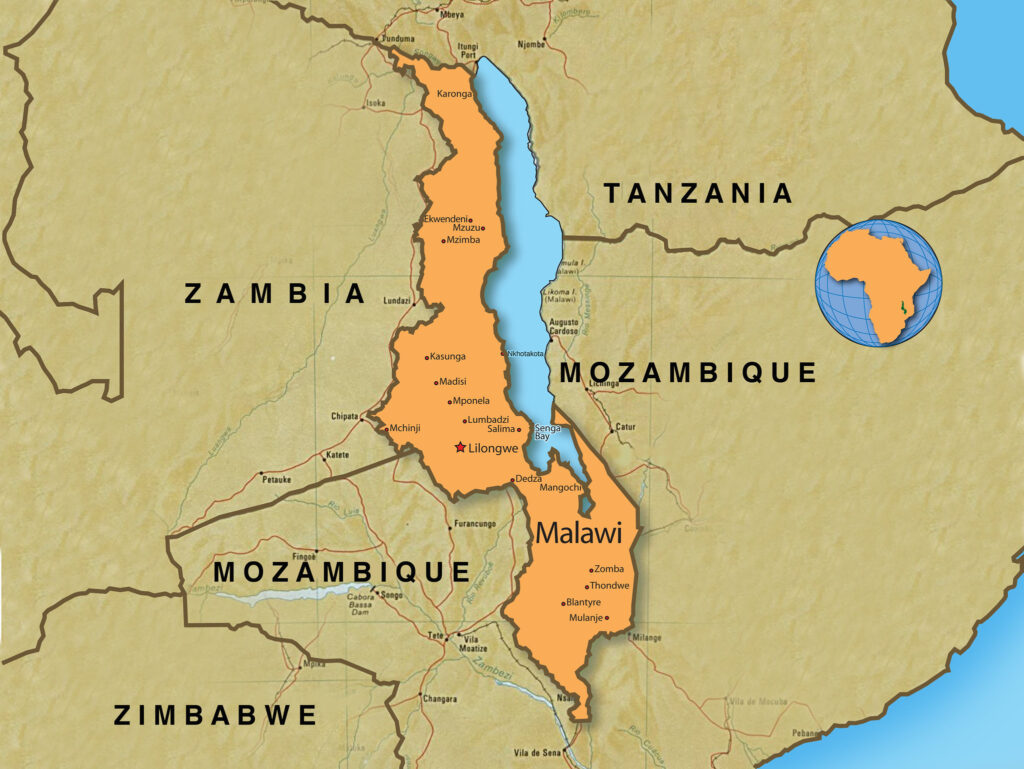Lilongwe, Malawi … The nation of Malawi is divided into three regions and 28 districts (The districts are like states in the U.S.). The regions follow ancient tribal backgrounds, although the tribal heritage of the people is somewhat spread throughout the nation. Unlike other African nations where tribal backgrounds can sometimes spark competitive conflicts, the people of Malawi cling to their common link as Malawians first. This has helped them avoid many of the historical problems that plague other nations.
The three regions are divided east and west in a nation that is much longer from north to south than it is wide. The largest population is the southern region at more than 7,750,000 people. The central region comes in at 7,500,000, and the north follows far behind at 2,300,000. The three largest cities are Lilongwe, 1,116,000, in the central region, Blantyre in the south at slightly more than 900,000, and Mzuzu in the north at 250,000.
Malawi is in the south-central part of Africa and is bordered by four much larger neighbors. Zambia is on the west, Tanzania on the north and northeast, and Mozambique on the east, south, and southwest.
Although Malawi has the fifth largest freshwater lake in Africa, Lake Malawi, it is landlocked from access to the Indian Ocean on the east side of Africa by Tanzania and Mozambique.
The average age is 17.8 years of age and life expectancy is 66 years. Approximately 50% of the population lives below the national poverty line, with 25% living in extreme poverty.
Chichewa is the national language, with English serving as the official language of business and commerce.

